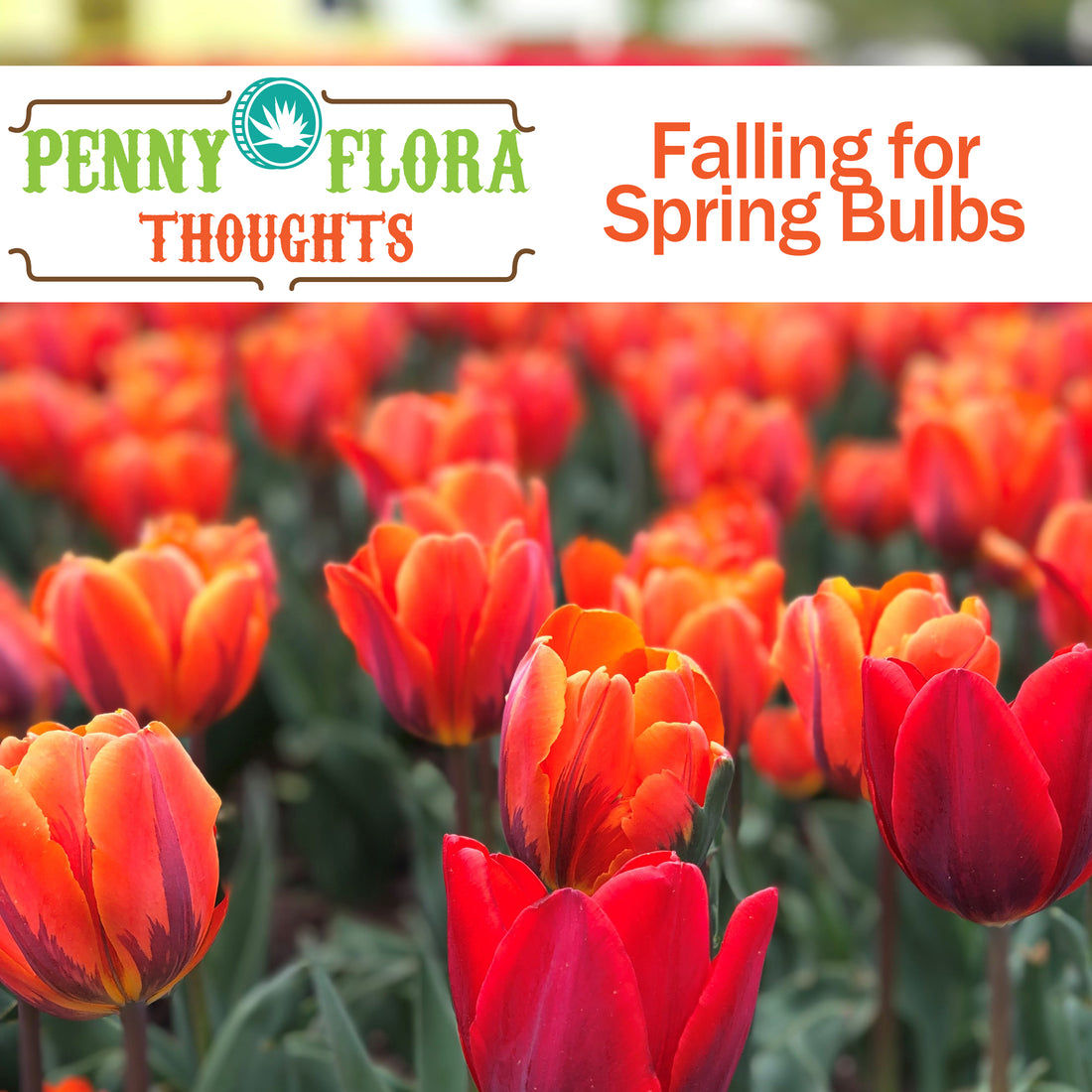Don’t put away your garden shovels yet. Fall is the time for planting spring bulbs. And if you’re looking for a great garden value, you can beat spring bulbs. They’re easy to grow, deliver a welcomed dose of spring color, multiply over the years, deter deer with their nasty taste and are highly collectible with thousands of choices. The trick is remembering to plant them. Read on for our planting tips and favorite bulb varieties.
When is the best time to plant spring bulbs?
Plant spring bulbs when the ground is cool but not frozen (September to early December), ideally when soil temperatures range between 40 and 50 degrees. Check soil temperatures with a soil thermometer or look online at the CFAES weather station. These bulbs require a winter chilling period in the ground to instigate blooms.

Where do you plant spring bulbs?
Spring bulbs thrive in a sunny or partly sunny spot with well-drained soil. We’ve learned the hard way that bulbs will rot if planted in heavily irrigated beds or low-lying areas that tend to stay wet especially in the winter. Also, they won’t bloom if planted in the shade. Instead, try planting them on a sunny slope, in an existing flower bed or even tucked in the lawn. Early flowering varieties can grow under deciduous trees before trees leaf out. We also love planting them among hostas, hellebores and daylilies that hide bulbs’ fading foliage after blooms are gone.
How do you plant spring bulbs?
Plant bulbs twice as deep as they are tall. For example, dig a 4” hole for a 2” bulb. Place bulbs – pointed ends up – in the base of the hole. For more wow or what some call a “bouquet effect,” plant bulbs in clusters of five to seven. Cover the bulbs with soil and gently press the soil to remove air pockets. For the biggest show, choose the largest size bulbs and plant them generously. Also try prolonging the bloom season by planting early, mid-season and late flowering spring bulbs.

Can you cut back spring bulbs’ foliage after they flower?
Avoid clipping spring bulbs’ leaves when their blooms are gone. Instead, wait six to eight weeks, so the leaves can help refuel the bulbs for the next season. To hide withering foliage, try planting with later spring plants like hostas and daylilies whose leaves emerge just as the spring bulbs fade.
My bulbs aren’t blooming any more. What can I do?
If bulbs stop blooming, they may need 1) a balanced fertilizer, 2) a move to a sunnier location, or 3) divided and replanted.

Do spring bulbs help pollinators?
Yes, home gardeners can plant spring bulbs to help sustain early pollinators like queen bumblebees, mason bees and hover flies emerging hungry for nectar and pollen. These early blooms provide critical food when little else is flowering.
What bulbs are deer resistant?
There are several deer- and rodent-proof bulb options in the Amaryllis family, including daffodils, snowflakes and snowdrops. These bulbs contain a bitter, poisonous substance called lycorine that mammals won’t eat. Other bulbs such as alliums, grape hyacinths and squill have a smell or flavor that’s undesirable to deer and rodents.
To keep deer and voles away from more desirable tulips and crocus, try spraying the bulbs with a deer repellent in fall before planting. Also spray around the bulbs in spring as the foliage emerges. Repellents like Plantskydd and Liquid Fence can be effective in masking this “tulip candy” from voles and deer.
What are some favorite spring bulbs?
- Daffodils: Bulbs don't get much easier than daffodils, and you can’t beat their cheerful yellow or white blooms. Try the classic 'Dutch Master,' mini ‘Tete a Tete,’ or the double ‘White Lion.’ Find out more about daffodils at daffodilusa.org.
- Crocus: When planted in mass, these dainty, cup-shaped blooms -- only two to four inches tall -- create a carpet of color in purple, yellow or white. For $20, you can buy as many as 100 to plant along a perennial border, under a tree or even in the lawn.
- Snake’s head fritillaria: In mid-April, these checkered, bell-shaped flowers add novelty to the spring garden. Plant them along a walkway to enjoy their delightful blooms. Also, try the showier crown imperial fritillaria climbing three feet with orange blooms atop a spiky crown of leaves.
- Allium: These ornamental onions are beloved by humans and pollinators alike for their spherical, Seussical blooms in purple, white, yellow and red. They open in late May and June, filling the gap between spring bulbs and summer flowers. Try ‘Globemaster,’ one of the largest with flower heads 8”-10”.
- Hyacinth: These spiked flowers are treasured for their heavenly fragrance. Plant them along a path or near a door to enjoy their scent. Try ‘Blue Jacket’ in deep blue and ‘Pink Pearl’ in bright pink. Also, try grape hyacinth that shares the same name but is unrelated. They’re delight planted along the edge of a border or beneath taller daffodils and tulips.
- Tulips: Yes, tulips may have a shorter life than other bulbs, but their showy flowers are undeniable. Plant them near the house and use a deer repellent to protect bulbs and blooms. Learn more about their rich history and multiple classifications at the National Garden Bureau. Try a multi-colored tulip like ‘Apeldoorn Elite’ in red and yellow or solid-colored ones like ‘Blue Aimable’ or ‘Yellow Flight.’


1 comment
Thanks for the tip on soil temp for bulbs and the link CFAES. I was going to plant today but the temp is still 56 degrees. I enjoyed the story about your company in the 614 magazine. I will stop in next time I am near Marengo.